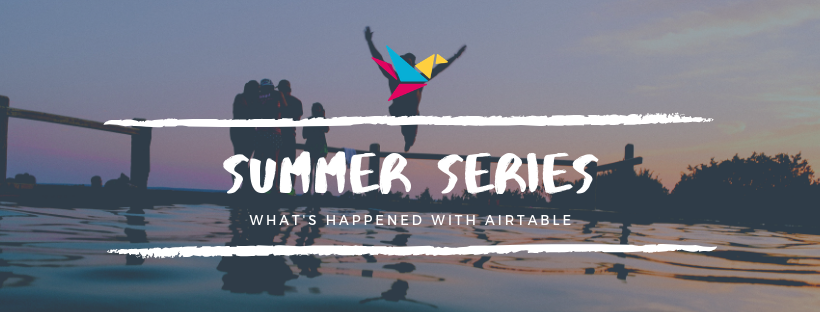What a Fully-developed CRM within Airtable Looks Like
This week we bring back the episode with Gareth Pronovost, foremost Airtable YouTuber and owner of GAP Consulting. Gareth’s background is in financial services, and was very familiar with spreadsheets before finding Airtable and diving into its array of capabilities. Since then Gareth has dedicated himself to going all-in on doing consulting for Airtable users and companies, and as part of his work he releases a new video almost every week to demonstrate Airtable tips, tricks, functionality and tutorials.
Because of his background with finance and spending countless hours in spreadsheets, Gareth is in a unique position to quickly adapt and delve deep into Airtable. He’s been using it to “help businesses get organized and automated.” His general app use workflow involves helping people build systems with Airtable as the heart then Zapier as the automator. He organizes his week as a combination of client work, fun side projects, then internal work to improve his own business systems.
His YouTube channel started as a whim to see what teaching people about Airtable would look like. When he released his first video he had 3-4 people reaching out to him for help with Airtable, and that was when he realized that it was a great tool for helping people and finding new clients. Not only that, but it was something he enjoyed doing. That is what led to the birth of his Airtable-dedicated channel.
Gareth showcases the CRM he uses internally at GAP Consulting that he built in Airtable. The database uses advanced functions woven throughout a slew of practical features. A few hightlights include:
- A table dedicated solely to showcasing all the Zapier automations associated with the database, what they do, their triggers and steps, and finally a link to the automation itself. This serves as documentation within the base itself, removing the need for external attached docs.
- A main Contacts table integrated with Calendly to capture and store potential client’s information from form submissions and consultations. In order to get on Gareth’s calendar a future clients needs to answer several vetting questions (monthly revenue, team size, etc), and this information is easily organized in the table.
- Consultation table connected to the Contacts table above, that stores more of the data directly associated with a contact captured, and which is used during the initial conversation.
- An in-consult form he uses to take notes associated with the standard questions he asks, which makes it easy to capture pertinent information on the potential clients goals and desires. He saves time in post-call categorization by filling it out in real time, and this also makes looking back on the notes effortless.
- Tasks/Interactions table to create proposals with attachments and all relevant data. Once the proposal is made Gareth also built in an automation to send the proposal when a status is added to the record. The email sent to the client includes all the details and a link to view the proposal in Airtable.
Gareth demonstrates both the range of capability available to people with Airtable, and how much work can be saved when the right workflows and automations are in place. His personality and passion for sharing great systems are contagious!
Here’s the video of the original podcast, including more of Gareth’s story, and the live walkthrough of the base described above:
Episode Video:
Episode Audio
Like this? Consider subscribing on your favorite podcasting app or on Youtube to stay up to date on all things Airtable! Thanks for the love!


![[S16-E07] Full Podcast Summary for 11-14-2023 – Calendly Integration; New Interface Forms; Global Fields](https://builtonair.com/wp/../uploads/segment_image_1-116-440x264.png)

![[S13-E07] Full Podcast Summary for 02-21-2023 – RPG in Airtable from Jeremy Olgesby](https://builtonair.com/wp/../uploads/segment_image_1-92-440x264.png)
![[S12-E01] Full Podcast Summary for 09-06-2022 – Scott Rose, Formula Bar Charts, Reservation Forms & Synced Table Linking](https://builtonair.com/wp/../uploads/segment_image_1-75-440x264.png)
